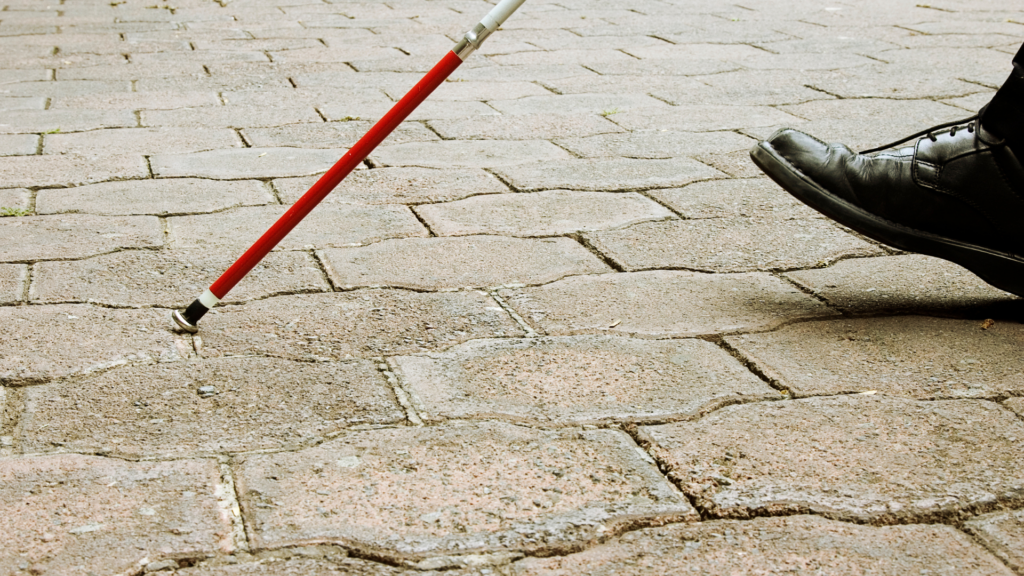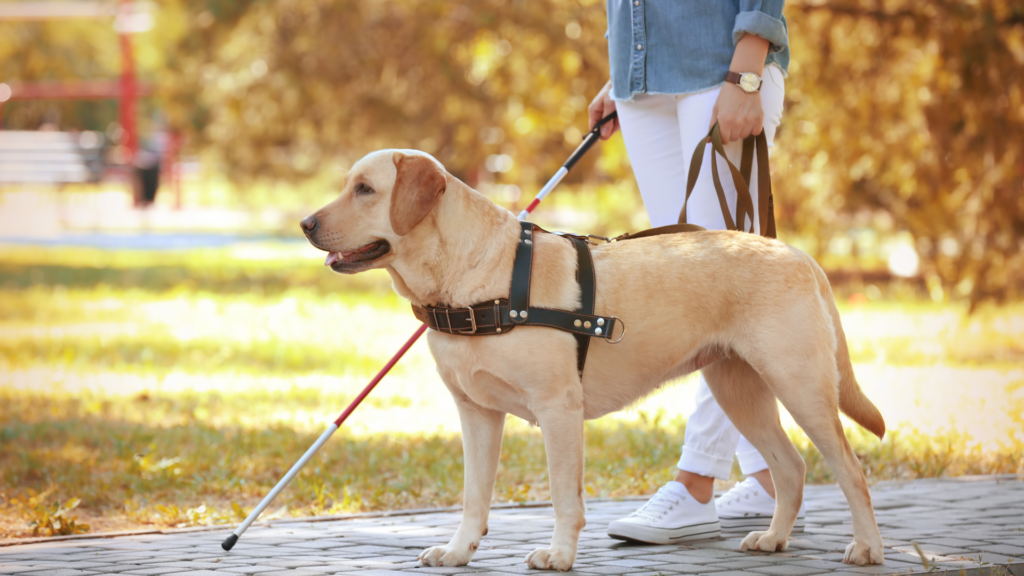History and Advocacy
The White Cane as a Mobility Aid

The white cane is a symbol of both blindness and independence. It allows a legally blind person to travel independently. A white cane with red at the bottom identifies a person as legally blind. The introduction of the white cane in North America is attributed to the Lions Clubs International. In 1931, they started promoting the use of white canes for people who are blind as a national program.
Some people are confused when they see a person with a white cane, especially if the person seems to have some usable vision.
The term “legal blindness” does not necessarily mean total blindness. Most persons who are legally blind have some usable vision. Some may still be able to read (regular or large print), recognize faces and colors, depending on the type of vision
impairment and degree of vision loss. Vision may also change throughout the day depending on the time of day, health of the person, lighting of the area, etc.
There are different styles and lengths of white canes, depending on a person’s height, visual impairment and specific needs: the LONG CANE, which can be collapsible or rigid, and the SUPPORT CANE, which can also be collapsible or rigid,
and is designed to support a person’s weight and to help the person to walk.
Canes are used primarily to help navigate the area ahead of the user. The long cane allows a person to check for objects in the path of travel, changes in the surface underfoot, and the nature of the surface ahead. Using the long cane requires specialized
training from a Certified Orientation and Mobility Instructor.
A small percentage of persons who are legally blind use a dog guide rather than a white cane, but they usually need cane and orientation and mobility training before acceptance to a dog guide school.
Massachusetts White Cane Law: All motorists, when they see a pedestrian who uses a white cane or a dog guide at a street crossing, must come to a complete stop.
What breeds are used as guide dogs?
Many people wonder what breeds of dogs are most commonly used as guide dogs for the blind. Guide dog organizations recognize the dog breeds most appropriate for use as guide dogs for the blind as Golden Retrievers, Labradors, and German Shepherds. These breeds are the ones most frequently chosen, but that doesn’t exclude other breeds such as Poodles, Collies, Boxers, Chesapeake Bay Retrievers and Airedale Terriers.
Some guide dog programs choose cross-breeds like a Golden Retriever/Labrador cross. The Golden/Lab cross is quite popular for use as guide dogs for the blind since both breeds are known to be intelligent, have a strong work ethic and early maturation. Labradoodles are also common; they are Labrador/Poodles specifically bred to provide dogs that shed less for the owners who have allergies to hair or dander. Other breeds may be difficult to obtain as guide dogs because most programs don’t
accept them for training.
The most important qualifications for a great guide dog for the blind are intelligence, capability, willingness to work long hours, high stress tolerance, and good health. Golden Retrievers, Labradors and German Shepherds share all these traits, and are widely accepted and easily recognized by people as a guide dog.
Which breed is the original guide dog?
During World War I, German Shepherds were the original guide dogs. They were primarily selected for their availability. But their training and temperament were perfectly suited for the job: they were bred to work, oftentimes for very long hours; they were trainable, and they were intelligent enough to work out problems or situations beyond the scope of their training. Most guide dog programs later switched to Labrador Retrievers because the image of German Shepherds deteriorated among clients. German Shepherds need confident owners who can train and handle them, for they can be hard-headed and destructive if they lack proper mental and physical stimulation and they tend to bite if they are not well trained.
Which breed is considered the most successful dog for the blind?
In fact, 70% of the dogs used as guide dogs for the blind in the U.S. are Labrador Retrievers. And this is true for most programs throughout the world.
The Seeing Eye®, a well respected program, in Morristown, New Jersey places Labs at the top of their list of suitable breeds. The American Kennel Club’s (AKC) top ten most popular dogs rankings show the Labrador Retriever still reigns supreme. The dogs on their list are extensively used in many guide dog programs throughout the world. The three of the top four ranking from the highest are as follows: Labrador Retriever, German Shepherd, and Golden Retriever. Guide dog organizations recognized these breeds capacity and adaptability to become qualified guide dogs for the blind and to support the basic needs of their owners to enable them to experience the independence and freedom in the life they choose to live.

